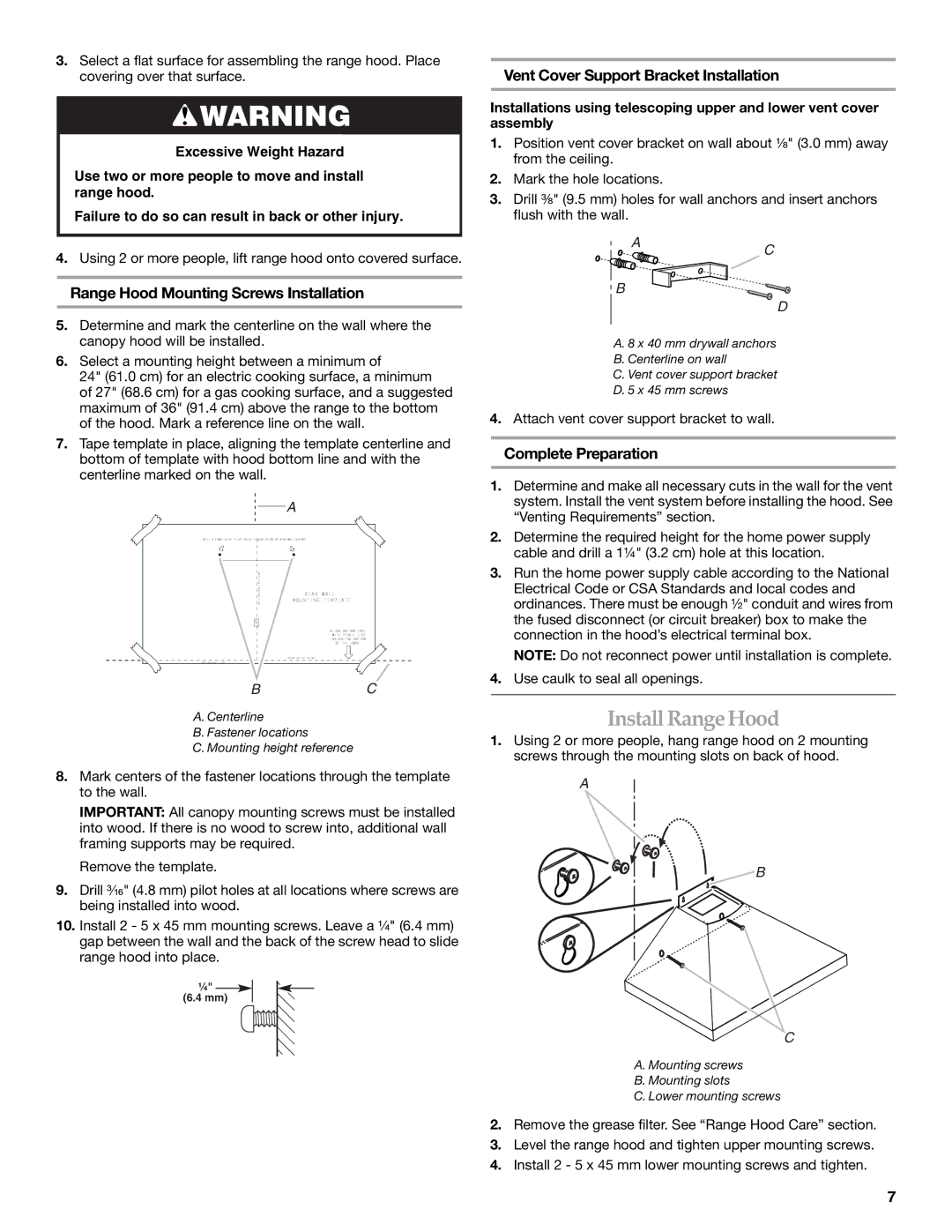LI3Y7C, W10322991C specifications
The KitchenAid W10322991C, LI3Y7C is an exceptional addition to any home kitchen, celebrated for its combination of functionality, durability, and innovative technology. This specific model stands out for its versatility and user-friendly design, making it an ideal choice for both amateur cooks and professional chefs alike.One of the main features of the KitchenAid W10322991C is its impressive motor performance. Engineered to handle even the most challenging recipes, the powerful motor ensures consistency in mixing and kneading. This feature is particularly important for baking enthusiasts who require precise measurements and thorough ingredient incorporation to achieve the perfect dough and batter textures.
In terms of build quality, the W10322991C model boasts a robust construction using high-grade materials. This durability not only enhances the mixer’s lifespan but also contributes to its stability during operation. The design features a weighted base that minimizes vibrations, allowing for a noiseless experience in the kitchen.
A standout technology incorporated into this model is the planetary mixing action. This allows the mixing attachment to rotate in one direction while the bowl rotates in the opposite direction, ensuring that all ingredients are thoroughly combined. This efficient mixing method guarantees that no ingredient is left unmixed, delivering an even consistency in every preparation.
The KitchenAid W10322991C also comes with multiple speed settings, allowing users to select the ideal speed for any task – from gentle mixing to high-speed whipping. Additionally, the inclusion of various attachments such as a flat beater, wire whip, and dough hook further expands the machine’s capabilities, enabling users to tackle a wide range of culinary tasks.
Another characteristic that enhances user convenience is the tilting head design. This feature allows for easy access to the bowl, making it simpler to add ingredients or switch attachments without any hassle. Coupled with a generous bowl capacity, this design is particularly beneficial for larger batches or intricate recipes.
In conclusion, the KitchenAid W10322991C, LI3Y7C is a powerhouse of a kitchen appliance combining efficiency, durability, and ease of use. With its advanced mixing technologies, robust construction, and versatile functions, it empowers users to explore their culinary creativity, making it a staple in kitchens around the world. Whether baking bread, mixing cookie dough, or preparing whipped cream, this model ensures outstanding results every time.

